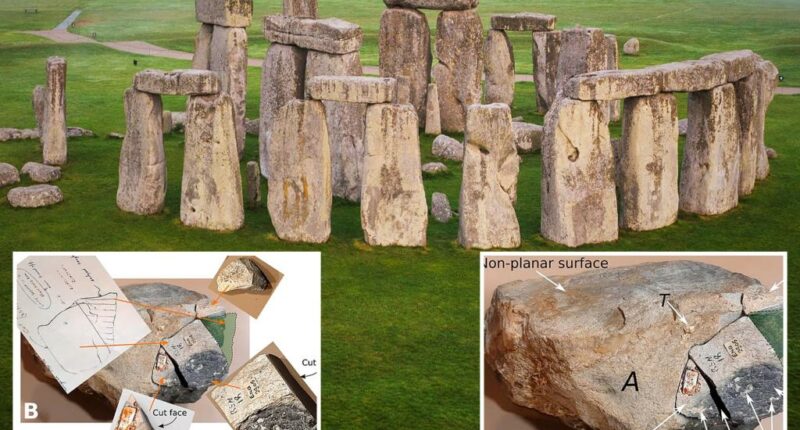
A new study has revealed evidence found at a prehistoric structure could be part of the key to unlocking the centuries-old mystery surrounding Stonehenge.
Aberystwyth University researchers determined that Neolithic communities were responsible for moving the “Newall boulder” on Wiltshire’s Salisbury Plain, according to the study published in the Journal of Archaeological Science.
The football-sized boulder was discovered during an early excavation at Stonehenge in 1924 by Col. William Hawley, according to a study published in June.
The discovery resolves a long-standing scientific dispute about whether glacial movement or human transportation 5,000 years ago contributed to the presence of the stones at the prehistoric monument.
“There is no evidence to support an interpretation that it is a glacial erratic,” the study found.
Professor Richard Bevins and his team compared the Newall boulder with stones at Craig Rhos-y-Felin, a rocky outcrop on the north side of the Preseli Mountains in Wales, more than 125 miles away.
Their research also revealed that chemical analysis showed identical amounts of thorium and zirconium in the geology at Craig Rhos-y-Felin was found at Newall boulder and other fragments found at Stonehenge.
Researchers mentioned that the Newall boulder is a foliated rhyolite and its surface layer is rich in calcium carbonate — further supporting the idea that humans moved it to its final resting place since glaciers would have scattered similar pieces across the Stonehenge region.
The study also unearthed a fascinating secret hidden within another of Stonehenge’s buried stones — Stone 32d.
It was previously believed that Stone 32d was a rock called spotted dolerite. However, it’s actually a foliated rhyolite, just like the Newall boulder.
“Part of the fascination of Stonehenge is that many of its megaliths, in contrast to the large, relatively local sarsens, can be proven to have been sourced from Wales, over 200km to the west,” the study revealed.
The study states that “most archaeologists accept that Neolithic people achieved this remarkable feat, transporting blocks weighing up to 3.5 tonnes,” but a “contrary view” remains that “no human effort was involved.”
“There is, however, a contrary view, which proposes that no human effort was involved: rather, it is argued, the Welsh stones were transported by glacial ice long before Stonehenge was built,” researchers wrote.
One of the more prominent advocates for the glacier theory is Dr. Brian John, a geologist whose previous study found that the Newall boulder exhibits glacial abrasion marks.
“The boulder was reduced in size and heavily modified during glacial transport, for much of the time on the bed of a glacier,” John wrote.
“It was eventually dumped at some location on, or relatively close to, Salisbury Plain.”
However, Bevins and his team said his finding has “no basis in evidence.”
“To present it is as fact, rather than as hypothesis, is disingenuous,” the study stated.
Bevins’ team argued that similar fragments would be found elsewhere on Salisbury Plain if glaciers transported the stones, but they are concentrated only at Stonehenge — strengthening the case for human movement.
“The presence of Stonehenge itself is the evidence of movement by Neolithic peoples of stones weighing up to as much as 40 tonnes,” researchers wrote. “Unless it is argued that all the stones were just lying on the ground ready to be erected where they were to make Stonehenge, the stones must have been moved into position.”
The researchers firmly stated that “if Neolithic people could move a stone a few tens of metres they could move it tens or hundreds of kilometres.”
“It may not have been easy, but it was entirely possible and moving 2–3 tonne bluestones would involve an order of magnitude less effort than moving the sarsens,” they noted.
Although the study confirms Neolithic communities moved the stones, the precise techniques they used remain unknown.
They did note that “recent indigenous peoples have been transporting stones weighing many tonnes great distances with ropes, wooden sledges and trackways – technologies which would have been available in the Neolithic.”







